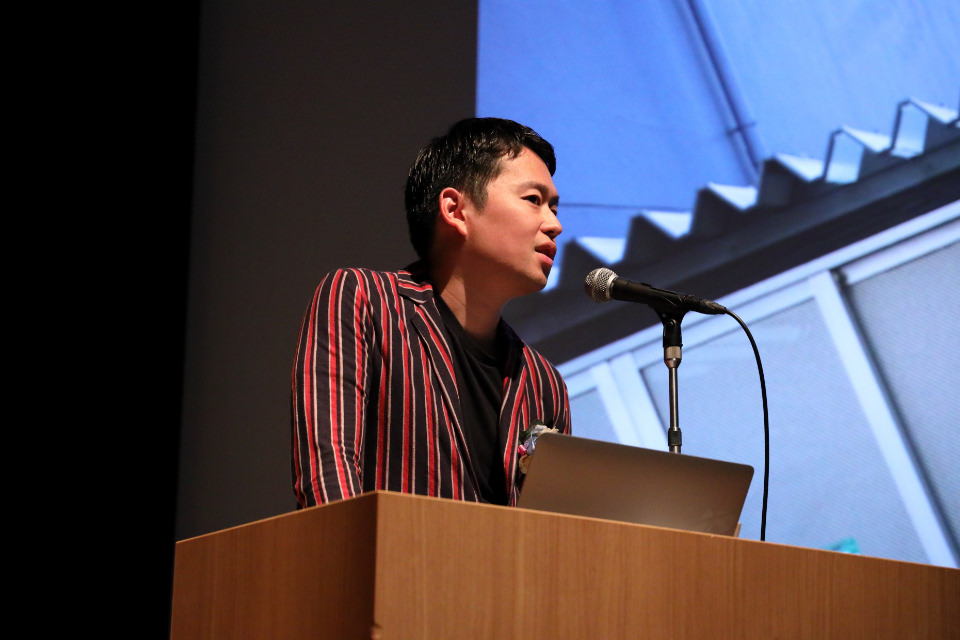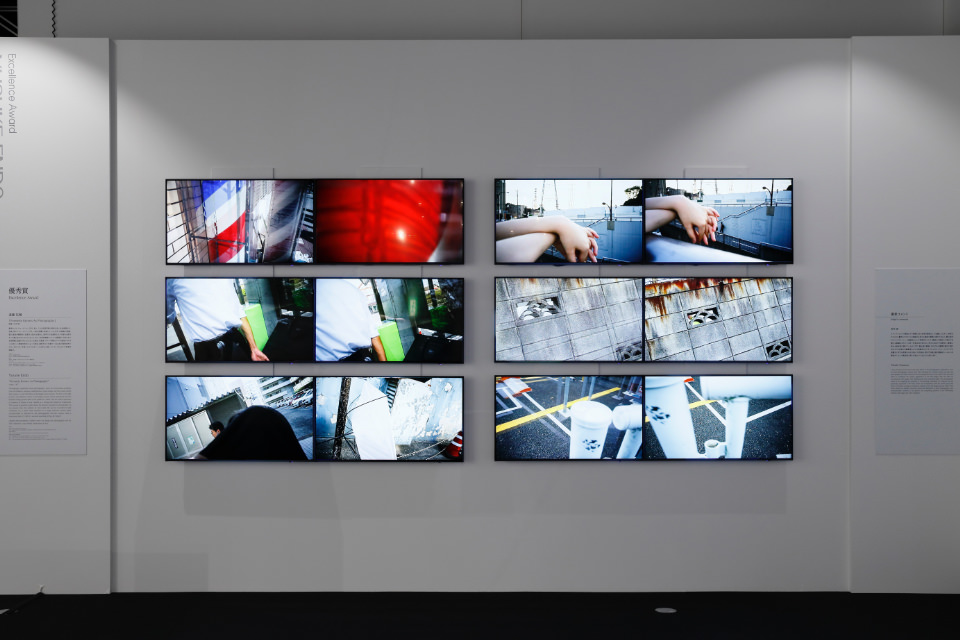PRESENTATION
My life, for 15 years, has consisted of taking around 1,000 photos a day in city streets. In the last few years, however, taking street photos has run into two complications.
The first problem is the right to one's likeness. The second is how the decisive moment in a photograph has become valueless.
People's awareness of their rights to their likeness has changed tremendously with the rise of smartphones and social media. People now loath having their face captured in a photo. This makes it very problematic to take photos in streets and then exhibit them. Creative expressions using street photography are now viewed as exploitative and violent. Given these circumstances, my project was to take photos without faces. Shooting this way had an unexpectedly positive influence on me. Forcing myself to frame shots without capturing a face even affected how I shot images without people in them. A more lively and spry sense arose from my more audacious framing technique. Being able to pursue this effect in images without people was a major point for me.
Changes in technology have driven the transformation in consciousness about portrait rights. But technology has an even more direct connection to the second problem — the dwindling value of the decisive moment in a photograph. As symbolized by the surveillance cameras installed all over city streets, every space is now continuously recorded by a camera. No doubt these cameras have caught me in the process of taking photos. It feels like we are not far from the dystopian world of a science fiction movie. Even if you deliberately stay at home and never venture outside, with Internet access you can capture decisive moments from drones, satellites, surveillance cameras, or someone else's smartphone. The day will likely come soon when we have cameras embedded in our eyes. No longer is it necessary to climb tall mountains or enter battlefields, once the motifs of the archetypical hero.
Coming back to more familiar territory, high-resolution still images can now be taken from video footage. Which poses the questions: Is there meaning in taking still photographs today? Has street photography become an indulgent form of creative expression? Is there any value left in the decisive moment in a photograph?
When shooting with my smartphone, I started paying attention to the function that records several seconds of images before and after the shot you took. This feature lets you decide which is the decisive moment after you shoot. It's like using a camera's continuous-shooting mode and depressing the shutter button before you plan to shoot and releasing your finger after the instant you wanted to capture has passed. My video work is a series of these continuous shots strung together. I noticed shooting this way produces images that surpass initial expectations. For example, the frame after the frame you intentionally shot is still impressive. Dismantling each frame might bring to mind Eadweard Muybridge's sequential photos of a horse. However, the direction is reversed. Movies and videos began from Muybridge's sequential shots, but my thinking for this project was to move back again to photos from videos. I made many discoveries: the pleasing appearance of an unexpected hand in a picture; the photo one step before the instant I was trying to capture proved to be more interesting; while approaching one subject, another subject appeared, like peeping through a crack. If I hadn't stopped taking one shot at a time, I would have never taken these sorts of photos.
Continuous shooting is not a new technique. But developments in technology were what created this opportunity for me. It is also the result of changes in social consciousness. For the exhibit, I arranged the decisive moment, as well as the consecutive images before and after the moment, as a continuous video. When I started on this project, I set a number of wishful hypotheses. Is taking a photograph different from taking a video? Does the stance of someone about to take a photo influence the subject? This is obvious when the subject is a person, but does the act of taking a photo have a mechanical influence on images without a person in them?
The project was genuinely fruitful, in that I was able ultimately to capture unexpected and arresting images. This accomplishment was huge. The reason being one of the most important elements of a decisive moment in street photography is capturing the unexpected.
How can I still engage in street photography now, when the very act of photography can be considered exploitative or violent, or when technology threatens its value? My answer is probably overly romantic: I simply like street photography. Perhaps I'm just clinging to the notion of taking photos in city streets. Nevertheless, even today I continue to be fascinated and mesmerized by the great street photos of pioneers in street photography. At the same time, I realize I'm living in an age where technological progress is redefining the conventional snapshot. In a way, I view the problems of my age to be fortunate problems that I, as an artist, should tackle.


Judges’s Comment
Takashi Yasumura (selector)
What interested me in your work was that you didn't try to present something within yourself. I think you brought an invaluable attitude to the work, in attempting to verify what you didn't yet know in order to broaden the field you find engaging. I selected your work because I felt such a stance should be rewarded and because I wanted to see your work exhibited at the venue here.
When I viewed your exhibit, I found it slightly different than what I had imagined it would be. Initially you had written that you would use transparencies. Was there any reason for giving up on that idea?
(Endo)
That was a video reflecting a process that had a slightly cynical take of so-called portfolio reviews and projected superimposed images with a projector. Since this exhibit decorates an art museum, I wanted to preserve the materiality inherent in photos, and I was trying to be both cynical and compelling through the quick transitions of multiple images. The files themselves are all videos, even though they look like photos.
(Yasumura)
I see. What I hear from you sounds like you are going way past what I was thinking. You adopted a selection method that purposefully omits the peaks — removing several images casts more relief on the remaining images. What was your reasoning in doing that?
(Endo)
I omitted the peaks so I could show the outcomes that enabled me to rethink what I believed was the decisive moment. In other words, I wanted to show that I, with this technique, could take decisive moments that previously I had been missing.
(Endo)
To be honest, I feel like I'm just checking my own answers. Your approach is like “the photograph is somewhere in the video”. But what I was expecting was the ability to learn more about what you don't know by varying the speed of the video or changing the scale.